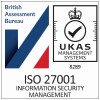Data analysis continues its accelerated involvement in fraud detections withing the insurance industry. However, it’s now more important than ever to base decisions on the complete picture, making successful data analysis adoption dependant on an insurers ability to access all their available data, both structured and unstructured.
This isn’t as straight forward as it may seem though. Data siloes, especially between structured and unstructured data sources, often prevent insurers from seeing (and flagging) the details they need to accurately detecting fraud.
Paul Stanley, CEO of 360Globalnet, and Russell Mackintosh, Head of Partner Acquisition at Synectics Solutions, share and discuss this industry challenge and explain how the two organisations have come together to help insurers tackle it.
- Q) How is the insurance industry currently using data?
Russell: “The industry is certainly embracing data analysis and not just for fraud detection. It’s also about customer experience. Established firms and start-up insurtechs alike are using data and insights to fundamentally change and improve customer pathways.”
“Real and near real-time data analysis to detect fraud indicators means quotes, on-boarding and claims settlements can be handled more quickly and confidently without compromising risk mitigation procedures. All while offering a ‘friction free’ customer experience.”
“AI is also rapidly changing the way insurers use their data – with predictive analytics tools, based on sophisticated modelling and algorithms, helping organisations better harness owned and syndicated industry data to increase detection rates.”
“For instance, we were able to help one of our clients increase fraud detection by some 30% (whilst simultaneously decreasing investigations by 50%), such was the accuracy achieved with AI.”
He goes on to say:
“But while massive strides forward have been made, the truth is that successful data analysis is, and always will be, entirely dependent on the accuracy and quantity of data used - you can’t afford to have any parts of the puzzle missing.”
With the insurance industry, however, this presents a distinct challenge. One very much linked to how data is recorded.
- Q) So, what is the ‘data challenge’ the insurance industry is facing?
Paul: “Anyone who’s ever submitted an insurance claim, for example, will know full well that not everything is a tick box or multiple-choice exercise. Free text boxes, uploaded documents, drawings, and any number of scanned paper forms from multiple sources can be part of the process.”
“Between 80-85% of data across the industry is recorded in this unstructured format.”
“Traditionally, this type of data takes a huge amount of time to manually collate and analyse, and when it does is accessed, it’s also often open to misinterpretation - both key reasons why we developed 360Retrieve as part of our 360SiteView no-code claims platform technology. 360Retrieve allows insurers to digitally process and analyse every piece of data they hold, including information locked-up in emails, images, PDFs and free text fields from case management systems.”
“Structured, syndicated data is invaluable for fraud detection. But so is unstructured information. Relying more heavily on one or the other runs the risk of key details (and fraud) falling through the cracks.”
“The combination of structured, syndicated, and unstructured data is therefore the logical solution. It’s also the foundation of our relationship with Synectics Solutions.”
- Q) Tell us more about the partnership between Synectics Solutions and 360Globalnet?
Paul: “We’ve known each other for a long time. Synectics Solutions is regarded as a leading insight specialist for the industry, has a great reputation for customer service, and, in National SIRA, they have an unrivalled syndicated database of cross sector risk intelligence.”
“We develop “end to end” online digital claims systems in no-code with an array of digital capability sold worldwide. The company is recognised for forward thinking software and innovation, thus teaming with Synectics to fully exercise our unstructured data technology was a natural fit for both businesses”
Russell adds: “It was very clear to us that our two platforms were incredibly aligned in terms of efficacy and objective. And, more importantly, a partnership between our organisations would yield the best possible results for customers.”
“National SIRA has already saved our customers over £5 billion. Adding in the capability to use unstructured data on top of this could create a further 30% increase in fraud detection, while also reducing the number of false positives.”
Paul: “We liken it to panning for gold. By accessing 100% of your available data, you don’t have to spend time and resources removing the sand and grit. Each incident that is flagged up is more likely to be a “gold nugget”. With fewer and shorter manual investigations, it allows customers to cut down on their operational expenditure and increase their fraud detection rate.”
- Q) Are there plans to develop a joint solution?
Russell: “There are. What started as a relatively informal partnership has become much more strategic. We are currently creating (and near to launching) a solution that will allow customers to access, cross reference and analyse data from both platforms via their National SIRA user interface. One login, 100% of data available, and the full functionality of two separate platforms – all through a single plane of glass. It’s very exciting.”
Paul: “Both of our organisations have a culture of knowledge exchange. Customers can tap into this. In return, the information they share with us will be used to improve our databases and models.
It might sound like a cliché, but this partnership is creating a best in breed solution, one we hope will make a real change to fraud detection in the UK.”
If you like to know more, get in touch today.

